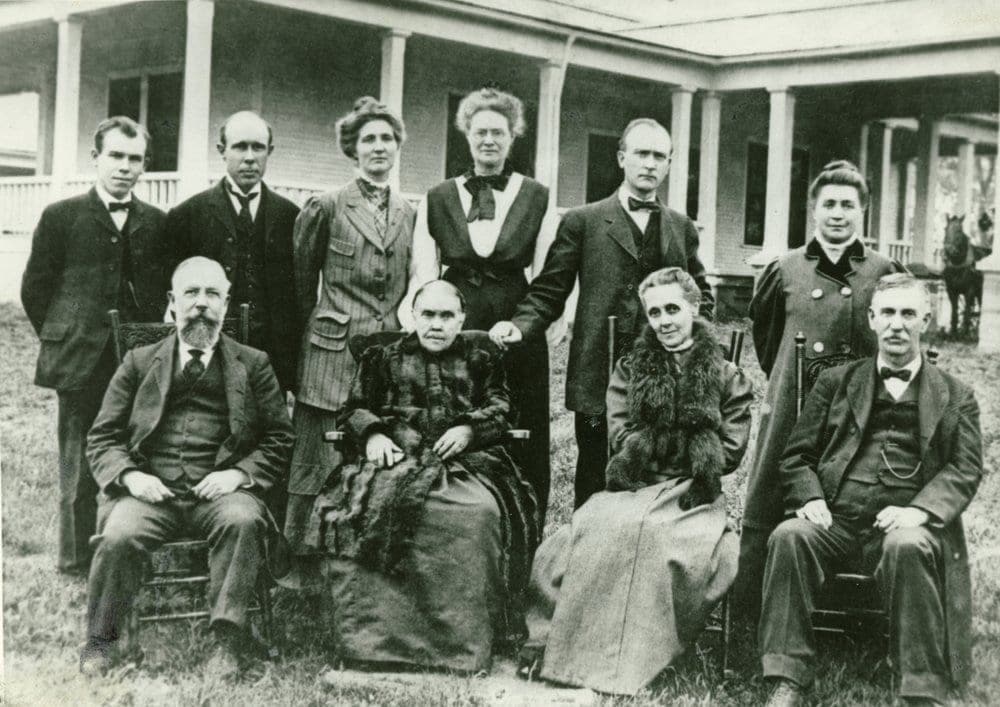
If you missed it, women’s ordination has been the subject of a lively discussion on the Adventist Review’s online communities in recent weeks.
Readers appear to be inspired by a mid-September appeal from General Conference leadership to prayerfully study the issue for themselves in the Bible and the writings of Adventist Church cofounder Ellen G. White.
Commentators are offering Bible texts, quotes from Ellen White, and a fair amount of personal opinion as they weigh in on the Facebook pages for Adventist Review and Adventist World, and in the comments section under the Adventist Review’s online articles.
But a few key questions kept popping up.
So we decided to compile five of the most frequently asked questions and put them before some of the Adventist Church’s leading thinkers. The rules for the answers were simple: Use simple, clear, and highly reader-friendly language. No academic language. No footnotes. Each answer should be about 150 words.
Each question has three answers, one for each of the three positions that emerged from a two-year study conducted by the church’s Theology of Ordination Study Committee.
We found 15 contributors, and each supported the position that he or she wrote for. No names are attached to the answers to prevent the possibility of personalities clouding the issue.
The list of participants was reviewed by Artur A. Stele, chair of the Theology of Ordination Study Committee, and Bill Knott, editor-in-chief of the Adventist Review.
This article is not meant to replace church members’ need to study the matter for themselves. Instead it aims to assist in the study process by helping clarify the differences between the three positions.
1. Is ordination a biblical concept?

Position 1: Ordination is a biblical concept. In the Old Testament, priests underwent a ritual anointing with oil to set them apart for the ministry of the priesthood (Ex. 29:7; Lev. 8:12; Num. 3:3). Levites were set apart for ministry by the laying on of hands (Num. 8:10, 11). Kings were set apart by anointing them with oil (1 Sam. 16:1, 13; 1 Kings 1:39; 2 Kings 9:3, 6).
In the New Testament the seven deacons in Acts 6:1-6 were commissioned with a ritual laying on of hands, just as Paul and Barnabas were commissioned in Acts 13:2, 3 as apostles of the churches, and Timothy was set apart in 1 Tim. 4:14 and 2 Tim. 1:6 to an unnamed responsibility generally assumed to be that of church elder. While the discussions of appointments of other elders in the New Testament do not explicitly mention an ordination ritual (Acts 14:23; 1 Tim. 3:1-7; Titus 1:5-9), 1 Tim. 5:22 seems to suggest that they too were ordained by laying on of hands. A service of commissioning with a special ritual associated to signify transmission of the Holy Spirit is considered to be an ordination service.
Position 2: The answer to this question depends on your understanding of the term “ordination.” If by ordination you mean promotion, advancement, induction to an office or the time when one begins exercising authority over others, then it is not a biblical concept. Ministry in the New Testament is invariably defined using Greek terms such as diakonos (servant) and doulos (slave). Whatever these metaphors convey, it is not the exercise of authority, spiritual or otherwise, over others (Mark 10:42-45).
If by “ordination” you mean a simple rite of laying-on-of-hands where the church recognizes a person’s spiritual gift of leadership (Rom 12:8), commits the person to the grace of God (Acts 14:26; 15:40), and empowers them for the ministry of edifying the church (Eph 4:12), then it is a biblical concept. Thus, the Theology of Ordination Study Committee correctly defined ordination as “the action of the church in publicly recognizing those whom the Lord has called and equipped for local and global church ministry.”
Position 3: Ordination is from the Latin ordo, and simply means to place in order or bring order to. It was used by the Latin translators of the Bible to describe the placement into office of those leading the church, who would help bring organization and order to the church. Over time, ordination began to take on other meanings, associated with giving leaders special powers or spiritual statuses. This abuse of ordination led to a growing and unbiblical divide between laity and clergy. The Protestant reformers pushed back against these abuses. They began to restore the practice to its early simplicity of a public recognition of the representative authority and responsibility that elders, deacons, and ministers had to carry out their duties in leading the church. Whether we call it ordination, installation, commissioning, or something else, the practice of placing duly qualified leaders into office with a public ceremony of blessing and recognition is a model found in the Bible.
2. How does the Bible approach hierarchy, and how does the issue of hierarchy apply to us today?

Position 1: Jesus, Servant of servants, demonstrated true leadership that seeks not its own but loves to the point of death. The Kingdom of God is not about hierarchy and striving for position but humbly serves one another in love.
God loves order. Examples of His church government are (1) the patriarchy where a father bound his family by loyalty and love; (2) Moses’ organization of Israel under godly men and his willingness to die for rebellious people (1T652); and (3) the Levitical priesthood.
New Testament order is characterized by humility and fatherly care-taking. Under Christ, Head of the church and Chief Shepherd, were the apostles who had authority to establish churches, baptize, teach doctrine, and appoint elders. Under the apostles, elders served in humility as overseers of the local church with love and hospitality. Deacons took care of church business affairs. The Bible demonstrates that only qualified men should occupy these fatherly offices (1 Tim. 3:2-7, 12; Tit. 1:6), and calls all to serve each other with love and not bicker about positions (Phil. 2:3).
Position 2: In the Old Testament, leadership positions were based on family relations. Leaders were patriarchs, kings and priests and the succession of these leaders was hereditary and thus hierarchical.
In the New Testament, Jesus instituted a different approach to leadership based on a call to ministry, character and faithfulness to God’s word. He emphasized the importance of service and not "lording it over” people, in contrast to society that had a hierarchical governance structure (Matt. 20:25-28). Paul and Peter also talked about leadership as service and following Jesus’ example of humble service (Phil. 2:5-7; Col. 4:7; 1 Peter 5:1-4).
Thus the only hierarchy in the New Testament church is Christ as the head of the church (Col. 1:18) and His people serving each other in Jesus’ name. Ministry positions in the New Testament church were not intended to form a hierarchical structure in which ministers and elders control what happens in the church and decide who will succeed them. Rather, the administrative structure of the church is people oriented. The primary function of a leader is to protect God’s people (Acts 20:28).
Position 3: In the Godhead, there are distinct, mutually agreed-upon roles, and a submission to one another in those roles. We do not believe in an eternal subordination or hierarchical relationship within the Trinity.
Among the offices or roles given to God’s created beings, including the angels, we do see a hierarchical arrangement. But this biblical hierarchy is radically different from the pecking order commonly experienced in a sinful world. Jesus taught that leadership in the church is to be servant-leadership. “Neither be ye called masters: for one is your Master, even Christ. But he that is greatest among you shall be your servant” (Matt. 23:10, 11). The church must persistently resist the tendency to apply worldly, fallen principles of leadership to church offices and leadership roles. It must also guard against a reactionary rejection of divine order and organization when such misuses arise, regardless how prevalent they may be.
3. Does the priesthood of all believers allow women to be ordained as pastors?

Position 1: Every person who genuinely accepts Christ receives by His grace a direct, non-subsidiary connection with Him as the sole intermediator between God and mankind, described in 1 Peter as a “priesthood,” a standing which requires no ecclesiastical vesting.
This is quite distinct from what Paul describes in 1 Timothy and Titus, where he lays out a benevolent masculine leadership plan in both domestic function and church order, including elder/overseer and deacon, here including gender distinctions that parallel the Old Testament precedents. Some contemporary scholars contend that Paul’s description of church order applies only to the Ephesus church, and hence lacks universal application. They deduce that a quite different “priesthood” of every believer validates ordination of church leaders without regard to gender. This approach unjustifiably mixes two different matters, and is not supported by the clear meaning of the texts.
Position 2: Yes, but only for women who are called and gifted by the Spirit for pastoral ministry. It is important to emphasize that the priesthood of all believers no more allows every and any woman to be "ordained” to the position of pastor, than it does allow any and every man to be ordained to the position of pastor.
The priesthood teaching of the New Testament (1 Peter 2:9) actualizes the fulfillment of the Old Testaments prophecy (Exodus 19:4, 5) of the covenant community’s calling to offer saving intercession and witness to the world. In the New Testament church, this calling and privilege is extended to every member of the saved community, whether male or female. The Spirit in Romans 12:4-7 allows all believers to minister to the world consistent with the grace and giftedness extended to them.
Ordination is not the conferral of a gift, but the church’s recognition and acknowledgement of what the Spirit has already done in the ministry of the persons God has obviously called.
Position 3: The priesthood of all believers calls all men and women to the “ministry of reconciliation” as “ambassadors for God” (2 Cor. 5:17-19). Yet it does not allow for all men or women to be ordained as pastors (1 Tim. 3:1-13). The priesthood of all believers does not set aside the calling and ordaining of specific leaders, pastors and evangelists to full time ministry.
We find evidence both in the Old and New Testament that God calls His people “a kingdom of priests” and “a royal priesthood” (Ex. 19:6; 2 Peter 2:9). Yet in both cases God still called out and ordained specific individuals to serve as leaders, priests, elders, apostles, pastors, and evangelists, among His people (Deut. 21:5; Eph. 4:11-16). The priesthood of all believers is not, therefore, a clear biblical basis for women (or men) to be ordained as pastors.
4. What was Ellen G. White’s role in the Adventist Church, and does this have implications in the discussion on women’s ordination?

Position 1: Ellen G. White is the best-known Seventh-day Adventist ever. Without holding any administrative offices, her counsels continue to shape many church programs and almost all church institutions at all organizational levels. During her lifetime she spoke on many occasions to congregations, pastors, administrators, and even General Conference officers. No other individual wrote so extensively or impacted the denomination so deeply as she did. Ellen White’s prophetic ministry demonstrates that despite never being ordained by the church, females can exercise a powerful ministry for God.
Position 2: Ellen G. White was divinely called to the prophetic ministry like the biblical prophets. She was a co-founder of the denomination and a blessing to all levels of the church through her inspired messages of guidance, reproof, and encouragement.
The church did not practice the ordination of females, nevertheless church leaders granted her ministerial credentials, acknowledging the fruits of her ministry and her higher ordination by a divine calling. Acknowledging other divine callings, she recognized a woman’s call to ministry despite the absence of a call for the husband. She did not oppose the church’s practice of not ordaining females as ministers but called women to accept their divine calling, enter the gospel work, and look to God for their ordination. Further, she advocated formal ordinations to various lines of ministry for both genders. This raises the question: Is the church willing to acknowledge the divine calling and ordination of females by a formal ordination?
Position 3: Ellen G. White’s role as prophet, preacher, counselor, and leader in the Seventh-day Adventist Church can hardly be overestimated. Although not ordained by any denomination, she wholeheartedly did whatever God called her to do.
Ellen White distinguished between God’s call and “man’s devising.” When the Foreign Mission Board called her to Australia, people were trying to send her far from church headquarters and “the Lord was displeased.” But she went, and her efforts and influence strengthened the work there. While respecting order, she was pragmatic with an eye always on mission. For example, she said John Tay should have baptized those on Pitcairn Island even though he was not ordained. She wrote that God ordains instrumentalities such as education, canvassing, and medical missionary work as a means of saving souls and “He ordained that men and women should be His representatives.”
While Ellen White does not specifically promote or endorse ordaining woman to the gospel ministry, neither does she write against it, and she has much to say about the importance of women being involved in various kinds of gospel service.
5. What is the single, most important reason for your position?

Position 1: The single most important reason is faithfulness to the Word of God. Behind the question of women’s ordination is the issue of how we interpret the Bible.
As Adventists we need to take what the Bible says literally, unless there are good reasons not to do so (for example, context, symbols, metaphors, and parables). Societal pressures should never be allowed to influence our understanding of Scripture. The Bible teaches that men and women are created equal but with different roles and responsibilities (Gen. 1:26; 2:18; Eph. 5:22-28).
If we explain away the literal meaning of such clear statements as a bishop must be “the husband of one wife” (1 Tim. 3:2) and “I do not permit a woman to teach or to have authority over a man” (1 Tim. 2:12), we will have difficulties of holding on to a seven-day creation week or our traditional position on homosexuality.
Position 2: The most important reason for allowing for the ordination of women is that it is consistent with what the Scriptures teach about the church. The church was founded to manifest in the world the reality of the salvation accomplished in Christ. In other words, life in the church is to be a reflection of life before sin.
The fact that God created all humans as equals involves more than just a duty to offer salvation to all. It involves recognizing that God has given gifts to everyone for furthering His kingdom and that those gifts are not based on gender. Those given the gifts of teaching or administration, for example, whether men or women, are called to use those gifts for God's glory. In return it is the duty of the church to recognize and accept those gifts. Allowing for the ordination of women permits the church to do just that.
Position 3: We want the church’s position to be biblically authentic, reflecting the full teaching of Scripture, across the whole of both Testaments. Our position recognizes that the apostle Paul specifies an ideal of male spiritual leadership, which is a consequence of the Fall in Eden, while acknowledging that Paul includes gender as just one among several ideal criteria for spiritual leadership.
Additionally, it accepts the clear Old Testament record of Deborah exercising authoritative spiritual leadership, and the fact that Paul speaks of women as “fellow workers” in evangelism and discipling.
Our position affirms the general biblical pattern of leadership, while acknowledging that, in Scripture, God allows exceptions to organizational guidelines and evangelistic methodologies, as opposed to moral commands. Being faithful to Scripture means reflecting both the spirit and the letter of biblical commands (2 Cor. 3:2-6), being neither more rigid nor less flexible than Scripture reveals God to be.
Adventist Review, Oct. 15, 2014: "Women’s Ordination Question Goes to GC Session"
Presentation of Position No. 1 by Clinton Wahlen at the 2014 Annual Council
Presentation of Position No. 2 by Carl P. Cosaert at the 2014 Annual Council
Presentation of Position No. 3 by Nicholas Miller at the 2014 Annual Council
Adventist Review, Oct. 17, 2014: "Church Leaders Confirm Unity Despite Ordination Differences"
Adventist Review, Oct. 12, 2014: "Mark Finley Offers 5 Steps for Resolving Disunity on Women’s Ordination"
Adventist Review, Aug. 8, 2012: “Questions & Answers Regarding Current Issues of Unity Facing the Church”
The recommended starting point for people unfamiliar with the issues are these three “Way Forward Statements” that summarize the three positions on women’s ordination drafted by the Theology of Ordination Study Committee:
Way Forward Statement 1 (PDF)
Way Forward Statement 2 (PDF)
Way Forward Statement 3 (PDF)
Theology of Ordination Study Committee’s final report, including the “Position Summaries” (PDF)